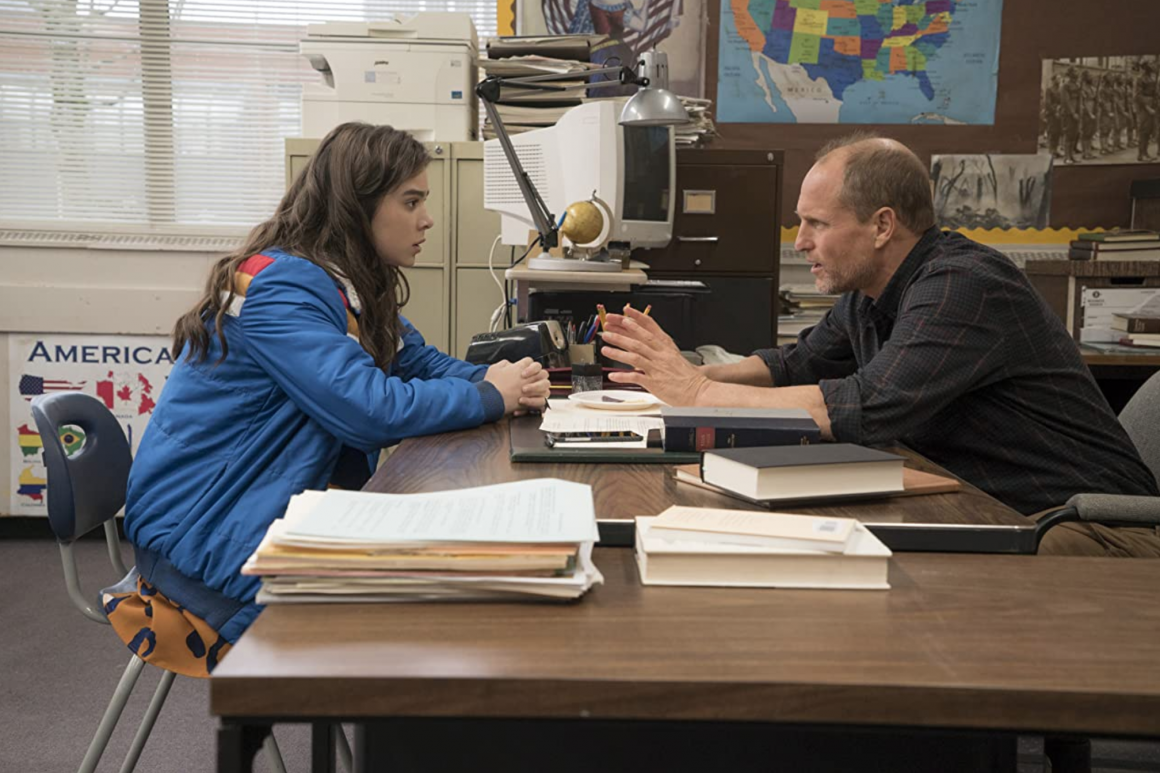
Four coming-of-age films that never get old
By Nicholas Cervania, February 17, 2021—
The term “coming-of-age” has been used to describe so many films that it’s begun to lose its meaning. Personally, I’ve always seen a coming-of-age film as a character-driven story about how a person — usually a young adult — learns a lesson that leads to their growth and maturity. The focus is more on how a character develops over the course of the film and is driven by emotion, compared to a more high concept plot. Indie coming-of-age films are among some of my favorite types of movies, and today I wanted to talk about my favorite four coming-of-age films that I revisit time and time again.
4. Spider-man: Into the Spider-Verse
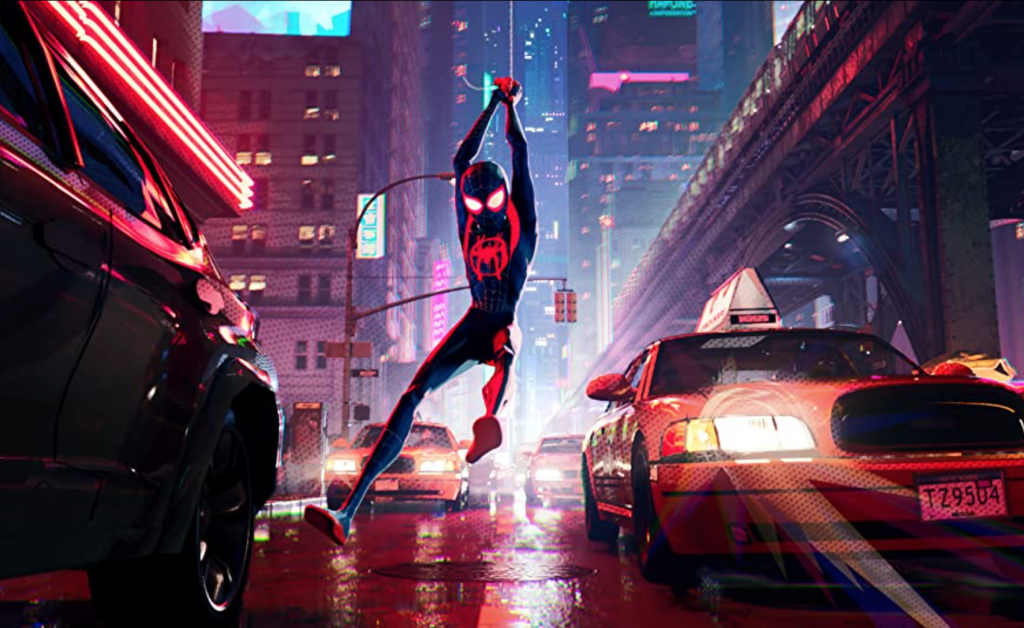
I realize that this might not be the most conventional choice for a coming-of-age film. This isn’t so much a coming-of-age film as it is a superhero movie with aspects of a coming-of-age story. But, I’ve always felt like the best reviews are completely subjective so I’m including it anyway, as the number four pick.
I actually read the Ultimate Spider-man comics when Miles’ character was introduced. Much like many other readers at the time, I didn’t like Miles at first. I personally felt like most of what he did never felt earned – gaining Captain America’s respect, receiving Peter’s web shooters and Aunt May’s approval over the span of a few issues. Another issue that I had was that he felt too much like a retread of the precedent set by Peter Parker, always seeming like a shallow and uninspired character who never deviated from his predecessor in any significant way. But over the years, Miles’ character has grown into one that’s beloved by many readers, many of whom weren’t receptive of him at first, including myself, and this movie exemplifies that perfectly.
The main theme of this movie is individuality – being yourself. And this is a motif that Miles’ character has come to represent in recent media. Shamiek Moore’s Miles starts off the movie unwilling to accept the responsibility that’s placed upon him, and he makes mistakes by trying to imitate the Spider-man that came before him. But by the end of the film, he learns that he can bear the responsibilities and expectations on his shoulders just by being himself. Watching him struggle throughout the film makes his victory feel triumphant because we, as an audience, know how much he has earned this achievement.
This is the type of movie that you can’t just see once. Repeated viewings reveal tons of little details in the background that are hard to catch on an initial viewing, and helps you appreciate the full picture and unique art style.
3. Me and Earl and the Dying Girl
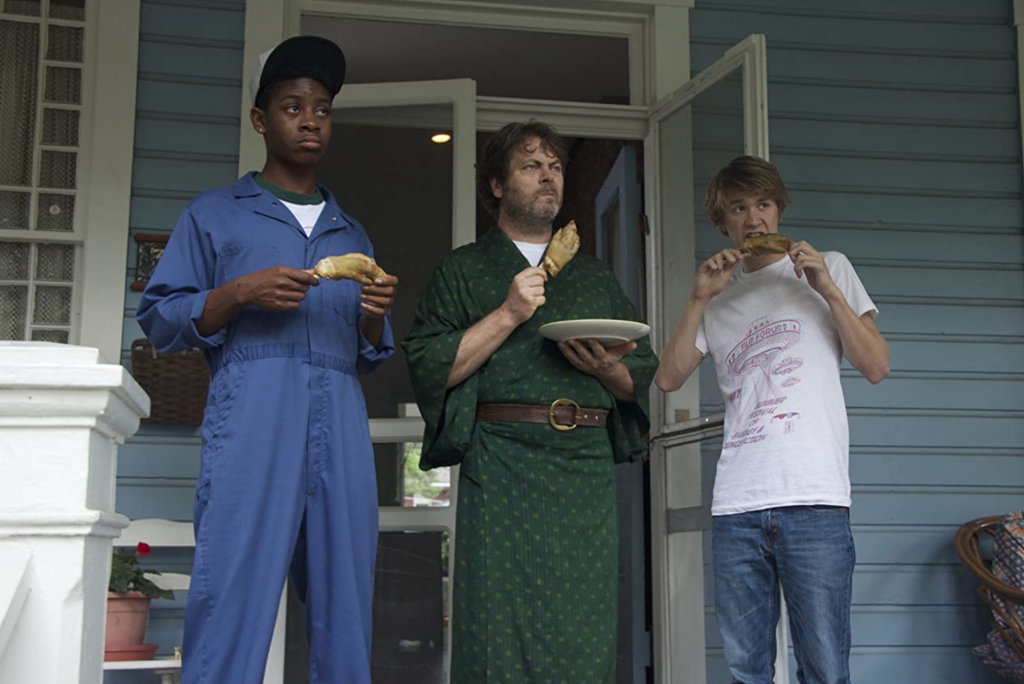
Based on the book of the same name, Me, Earl, and the Dying Girl is a story about Greg Gaines (Thomas Mann), who becomes friends with Rachel (Olivia Cooke), a classmate who has recently been diagnosed with leukemia.
The script is very heartfelt and the genuine performances bring them to life, adding that life to what would normally be a pretty depressing movie. Greg’s candid and deadpan internal monologues do an excellent job at introducing the audience to the way his character sees things, and it can be pretty funny at times while still managing to remain consistent with the rest of the movie’s tone. I find this movie to be a lot more enjoyable on multiple viewings over something like Perks of Being a Wallflower because I find it to be a lot more subtle with its message and because it does a better job at painting an accurate depiction of high school and late teenage life. This movie doesn’t over romanticize high school, and the main character is really just a kid who hasn’t found his place in the world yet.
Greg goes around school avoiding engagements and close interactions. This allows him to distance himself from the people he doesn’t connect with, but it also prevents him from connecting with the people who care about him. Even though Greg spends all his time making movies with Earl (RJ Cyler), whom he’s known since childhood, he still refers to him as his coworker instead of his friend. It’s only after he’s forced to spend time with Rachel for the first time that the wall he’s built around himself begins to come down. Rachel finds comfort in Greg, but it pains her to see him waste his life. She knows deep down that she’s nearing the end of her life and so it hurts her to see Greg waste his. Whenever she watches his films or sees him being himself, it makes her happy because for once Greg has a direction in his life. Rachel gives Greg something that he hasn’t had before — someone to live for other than himself. But, Greg doesn’t know how to process this feeling and he doesn’t know how to respond to it. He hates himself and whenever anyone shows compassion for him he doesn’t know how to handle it. At the same time though, he’s painfully concerned with what other people think of him. That’s something that anyone can relate to, and that makes the film easier to connect with.
This movie is also shot in a really interesting way. The director likes to use a lot of panoramic shots and long takes with different types of lenses and I find it much more interesting than the traditional static camerawork these types of films usually have. If I had one complaint though, it would be the lighting. Scenes are shot with a lot of natural light and I don’t think it’s very good at capturing the tone of the film.
2. Lady Bird
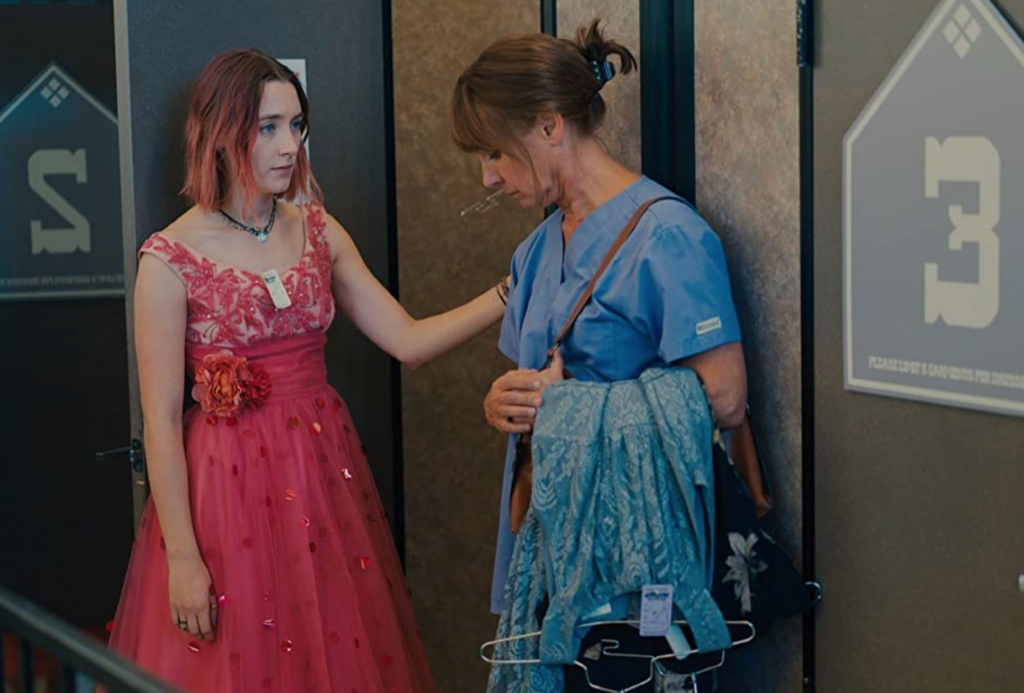
Lady Bird is one of the best films I’ve seen that illustrates the complicated and turbulent relationship between mother and daughter. The story follows Christine McPherson (Saoirse Ronan), who has decided on the name “Lady Bird” for herself, as she navigates her way through her senior year of high school – school plays, boyfriends and getting into college. But the relationship between Lady Bird and her mother is the most important aspect of the film. Their relationship defines the opening, much like how its absence defines the ending.
The main message of this film is the idea that attention is a form of love. Lady Bird’s mother, Marion (Laurie Metcalf), pays constant attention to everything she does, but this attention often takes the form of criticism, coming off as overbearing and overcritical. Oftentimes, it’s the main source of tension between them. But it’s in this way that love is depicted in a realistic way, and not the sappy, sentimental traditional way that most movies do. Lady Bird’s relationship with her mother is messy and tempestuous. From the outside, their relationship might seem aggressive, with the two of them going from calm to conflict and back at a moment’s notice. But at the same time, they share an unbreakable and unique bond with each other.
Unlike a traditional coming-of-age story, this movie isn’t just about Lady Bird’s growth, it’s also about Marion learning to let go. Lady Bird wants to leave her home town of Sacramento and move to the east coast to a school in New York City. On the other hand, Marion just wants to hold on to the fleeting moments she has left with her daughter.
When Marion finds out that Lady Bird has been waitlisted for a school in New York, she realizes that she has to say goodbye to her daughter. Her worst fear is brought to life, and she feels betrayed by Lady Bird, who she’s been desperately trying to hold onto. This causes the largest rift between them in the film, and is underlined with the film’s score becoming distorted and uncomfortable. Marion barely says anything to Lady Bird up until she leaves. As Marion drives away after Lady Bird leaves though, she bursts into tears because through the ups and downs, she’s still her daughter. The final scene of this film is Lady Bird, who has finally achieved her dream of escaping Sacramento, realizing that she’s now wistful for it, and how much she took the town and her mother for granted. Lady Bird and Marion may not like each other at times, but they love each other, and while it may not be easy to love someone it’s what matters the most.
Honorable Mention
The Edge of Seventeen (2016)
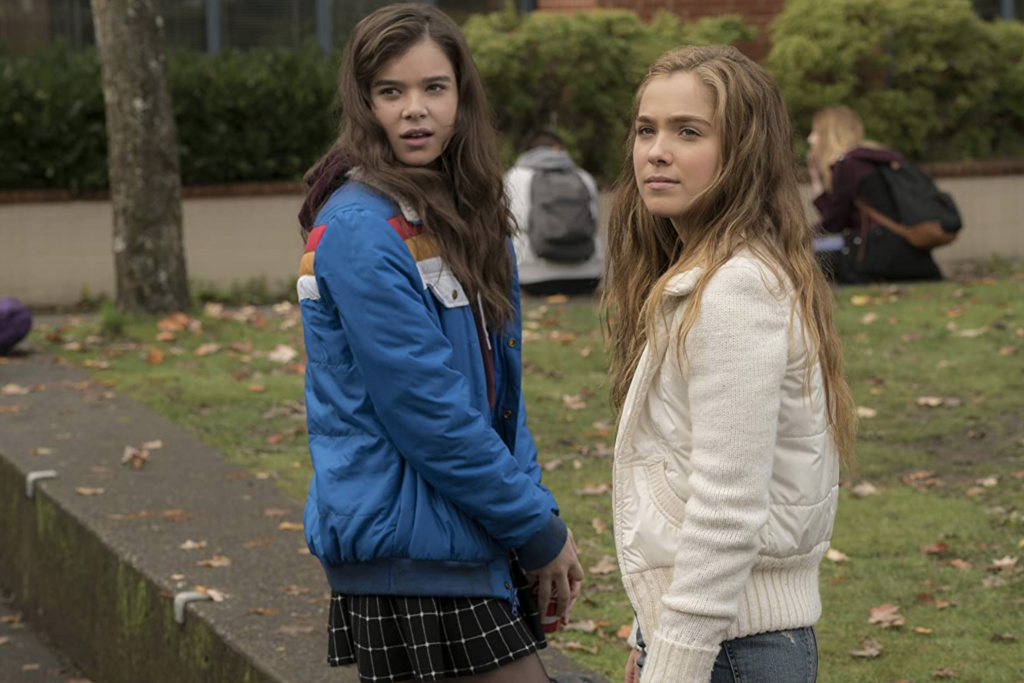
A while back, I watched The Edge of Seventeen and I got about 15 minutes into the movie before I realized that Hailee Steinfeld wasn’t in it. At that point, I learned that there were two movies called The Edge of Seventeen and that I was watching the wrong one. I turned off the 1998 version and found a copy of the 2016 one, but I wish I had stuck with the former because it looked way more interesting than the one I ended up watching.
If you’re a fan of coming-of-age stories, you were probably expecting it to be on this list, but I found The Edge of Seventeen to be insufferable and incredibly predictable. To the film’s credit though, its plot structure has been co-opted by countless movies since it’s release, like Tall Girl and To All The Boys I’ve Loved Before, among others. I felt most of the licensed soundtrack to be out of place and ineffective at framing the scenes they were in, and that the protagonist, Nadine, was very selfish. She never took into account anyone else’s feelings and never really learned from these mistakes. Her selfishness actively creates almost all of the problems around her but this isn’t something that really felt focused on. The movie almost expects you not to notice, distracting you with profanity and misplaced humor that isn’t thematically appropriate. The movie requires you to ignore her character flaws and see everything from Nadine’s perspective, who again, is in the wrong in most of her predicaments. While the dialogue of these characters might make them feel relatable, their actions aren’t justified well enough within the context of the narrative and as such I found it difficult to connect with the film on a personal level. The number one job of these films should be to make us connect with the main character, and this is where the movie failed for me. The reason I bring this all up however, is because this is exactly why I love Juno.
1. Juno
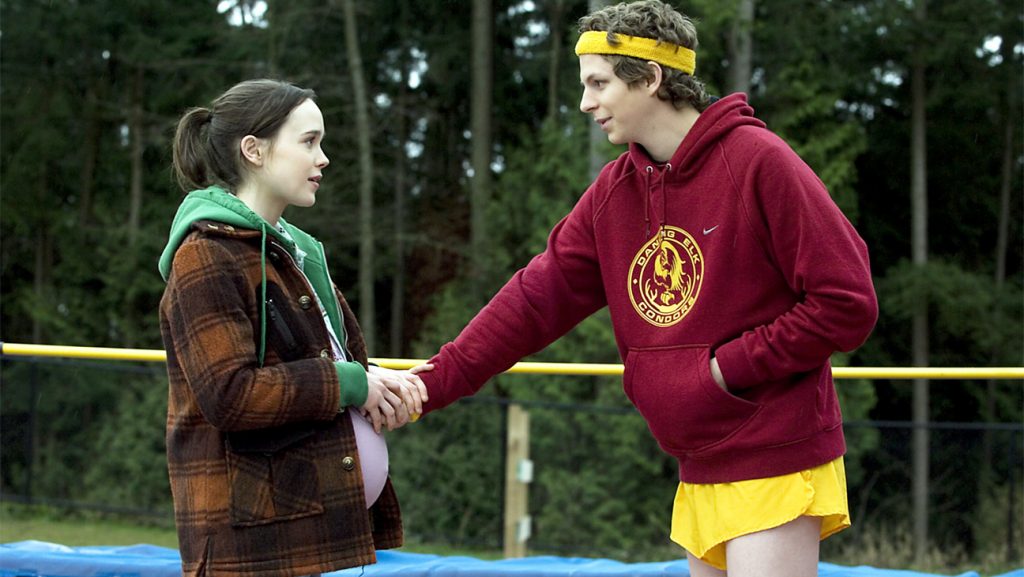
Enter, Juno – a refreshingly original and loveable indie movie from 2007. Juno stars Elliot Page as the title character, Juno MacGuff — a 16-year-old high school student faced with an unplanned pregnancy. If you ask me, Juno is almost the polar opposite of The Edge of Seventeen. While still being a female-led coming of age teen film with a similar tone, it’s much more heartfelt, personal and entertaining. Every issue I had with The Edge of Seventeen is executed skillfully here, from the charming and loveable protagonist, to the soundtrack composed of mostly early 2000s indie rock, which perfectly represents the offbeat and free-spirited character of Juno herself and expertly frames each scene. The scene alone where we’re shown Juno’s room for the first time and the camera cuts between the different intricacies and details of the room tells us more about Juno’s character than we ever know about Nadine all without even having to say anything. Each scene of the film is either with Juno or about her, making it feel much more personal and easier to connect with. Yet, every character in this film still manages to have an interesting character arc, while never taking the focus away from Juno herself. Every single line of dialog and character trait we’re told about anyone comes into play at some point in the film. Furthermore, most of the humor is pretty well placed, usually illustrating Juno’s character and how candid and often immature she can be.
Being a child of divorce, Juno has a very specific model of “the perfect family” in her mind in the beginning of the movie. Since Paulie Bleeker (Michael Cera), the father of Juno’s unborn baby, doesn’t fit that model for her, she invalidates their relationship together and rejects her feelings for him. In contrast, Paulie knows he’s in love with Juno and wants nothing more than to be there for her, even more so with her pregnancy. Juno decides to choose Mark (Jason Bateman) and Vanessa Loring (Jennifer Garner) to be the adoptive parents of her baby. At first they seem like the perfect family, and the scene where we meet them gives us a quick intercut montage of their preparations for meeting Juno so that they come across as such. With Mark and Vanessa as the perfect family that Juno desires, both for her baby and for herself, she confides in Mark and takes comfort in his company. But as Juno grows closer to Mark, he is reminded of his unfulfilled dreams with his music career and his fear of becoming a father, ultimately deciding to leave Vanessa. Just like this, Juno’s perfect model of family is shattered, and it’s even more significant that she was the one who caused it.
By the end of the movie however, Juno realizes the complicated nature of family, and how it can be perfect even in imperfection. Like Nadine, Juno has flaws, but unlike Nadine, she recognizes her mistakes in a way that feels narratively satisfying. The theme of family is punctuated by the final scene, with Juno and Paulie singing Anyone Else But You by the Moldy Peaches, a song that’s used to represent their relationship as the camera slowly pans out to bring the house behind them into view. Juno is a very tender but lighthearted film and it has a lot to say.
